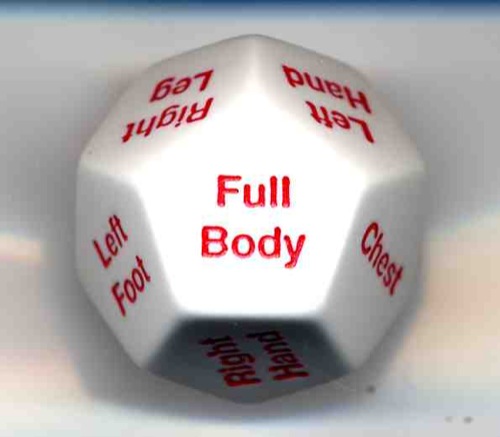So how do we capture the essence of combat, making it more like a scene from an action movie than scrolling DPS* numbers from the characters stoic attack stance. One way is to be more descriptive in combat. Don’t settle for the arbitrary, “He dies and falls down” as soon as his damage threshold is exceeded. Allow your final bad guy to remain standing two or even three rounds after he has died and describe each blow the characters make until the realize that the nemesis is no longer fighting back. Allow him to slump down in such away that the party is unsure who made the killing blow.
Award players who add more to combat than just rolled numbers. I recall a friend saying, “I like my players to feel like their characters are in a John Woo film.” If a player wants to attempt a wild undocumented maneuver in a game, award him experience and then his penalties for the action.
Another thing I like, is wound location. While this may add more o
 verhead to the game, I find a well streamlined system adds more to story telling than takes away from combat. I prefer the die method, and using s specialized die reduces the need to reference charts. Wound location should not change the dynamics of the game, and just because you roll a head shot does not mean you can ignore armor. Just remember that combat is somewhat abstract and a wound location just helps a player visualize his character’s current state.
verhead to the game, I find a well streamlined system adds more to story telling than takes away from combat. I prefer the die method, and using s specialized die reduces the need to reference charts. Wound location should not change the dynamics of the game, and just because you roll a head shot does not mean you can ignore armor. Just remember that combat is somewhat abstract and a wound location just helps a player visualize his character’s current state.Let us know how you handle wounds in your games.
*DPS – Damage per Second
No comments:
Post a Comment